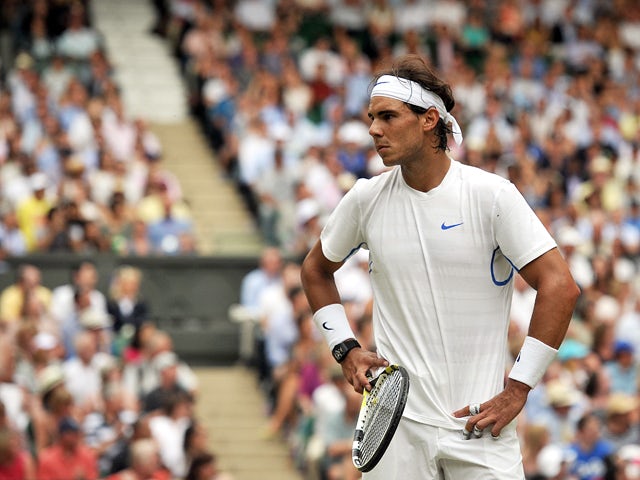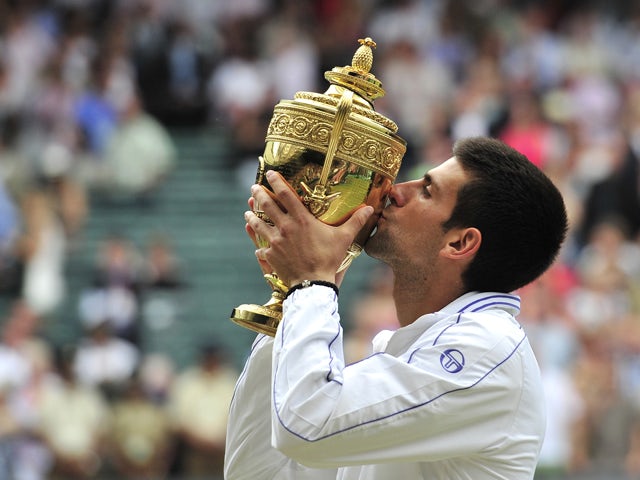After securing his second major title at the Australian Open at the start of 2011, the platform was set for Novak Djokovic to add a number of other illustrious titles to his trophy cabinet, and during the first half of the year, he collected victories in Indian Wells, Miami, Madrid and Rome. Despite losing in the semi-finals at Roland Garros, his first defeat of 2015, the Serbian was well prepared for an extended campaign at Wimbledon, where he had so far failed to reach the final in six attempts.
Djokovic began with triumphs over Jeremy Chardy and Kevin Anderson, before he required four sets to see off Marcos Baghdatis. Michael Llodra was dispatched in the fourth round, before he battled his way through a four-set encounter with Bernard Tomic. The world number one spot awaited Djokovic for the first time in his career providing that he could beat Jo-Wilfried Tsonga, which he did in four sets to progress through to a showdown with Rafael Nadal, who had won the title in 2008 and 2010 and was coming off the back of a semi-final victory over Andy Murray.
During the first half of 2015, the pair had already met four times, with Djokovic prevailing on each occasion. The 24-year-old had only dropped two sets in the process too, while he had seen off Nadal in straight sets in back-to-back clay-court encounters, something which, at the time, had never previously been achieved. The general feeling was that Djokovic had the edge over the Spaniard, but he had yet to do it on the grandest stage of all at SW19, and he would have to enter new territory to get his hands on the title.
 © Getty Images
© Getty Images
Perhaps sensing that he had to play more aggressively against an in-form opponent, Nadal attempted to stamp his authority on the final, executing his forehand to great effect that forced Djokovic onto the defensive for much of the opening set. However, after the first nine games all went with serve, Nadal was left to serve to remain in the set and at 30-0 looked on course to do so, but out of nowhere, two forehand winners from Djokovic and two forehand mistakes from the Spaniard saw the new world number one snatch the opener.
There was a look of disbelief from the champion, who couldn't believe that he had managed to fall behind, but he had to quickly regroup to stop Djokovic taking control of the contest. However, the Serbian was ready to take advantage of the position that he found himself in and after holding serve from 0-30 behind, he went about breaking Nadal for the second successive game after chasing down a drop shot. At 3-0 down, Nadal managed to win his first game in six, but it did nothing to discourage Djokovic who soon broke for a second time in the set before extending his advantage in the match.
At this point of their duel, Djokovic had already recorded 22 winners off his forehand wing, while Nadal's trademark shot was nowhere near firing on all cylinders. There was a feeling that the left-hander could find no answer to the shot-making that was being produced at the other end of the court, but Nadal soon showed that he wasn't prepared to relinquish his Wimbledon crown without a fight as he settled a few nerves by holding serve at the start of the third.
It would get better for Nadal who, for the first time in the match, managed to break the Djokovic serve after his opponent, perhaps sensing how close he was to his dream, began to make unforced errors. Djokovic held during the middle of the set, but at this point, Nadal was reinvigorated and capitalised on three more break points to take the third set. The crowd sensed that they were witnessing a classic and were fully behind the defending champion, but Djokovic showed that he also possessed winning qualities by fending off a break point at the start of the fourth.
 © Getty Images
© Getty Images
It was a game that would prove pivotal to Djokovic's whole mindset. His forehand was back in full working order and it was crucial that he broke the Spaniard for the first time in over a set. Nadal broke back immediately, but the encounter was no longer one-sided, as it had been for the previous 40 minutes. The further that the set progressed, the pressure was building on Nadal and at 4-3 down, he gifted Djokovic three break points and more importantly, offered his opponent the chance to try to serve for the Wimbledon title.
Another mistake on Nadal's forehand side gave Djokovic his opportunity, but the champion in waiting was visibly tense. He dropped the opening point, before a second mistake allowed Nadal a look at 30-30. However, looking to shorten the rallies, Djokovic reached championship point with a serve-and-volley, before Nadal surrendered his trophy by whipping a forehand long to allow Djokovic to celebrate his third Grand Slam title in two hours and 29 minutes.
After the match, Djokovic said: "It is really hard to describe with any words apart from that this is the best day of my life. I always dreamt of winning Wimbledon. When you are playing the best player in the world, Rafa, who has won two of the last three Wimbledons and always beaten me in the Grand Slams, I had to be at the top of my game and I think I played my best game on the grass courts ever."
The triumph would see Djokovic go on to win the next two Grand Slam titles at the US Open and Australian Open, but in 2012, Nadal would finally get his revenge as he prevented Djokovic from gaining hold of all four major titles by prevailing in four sets in the French Open final.









